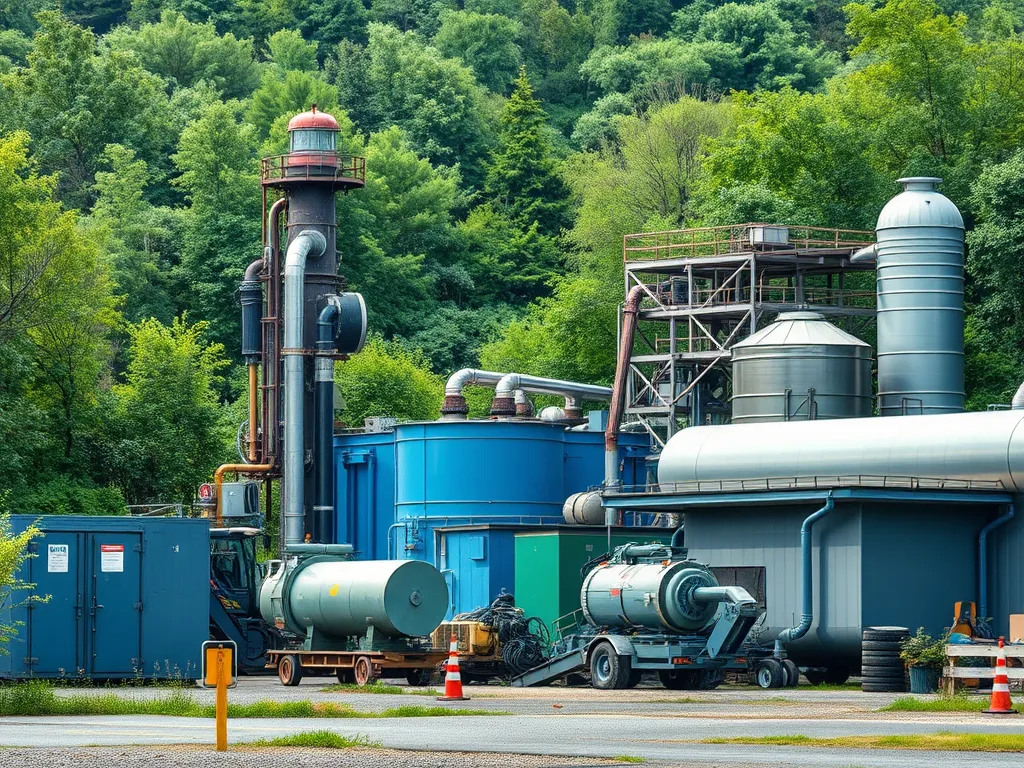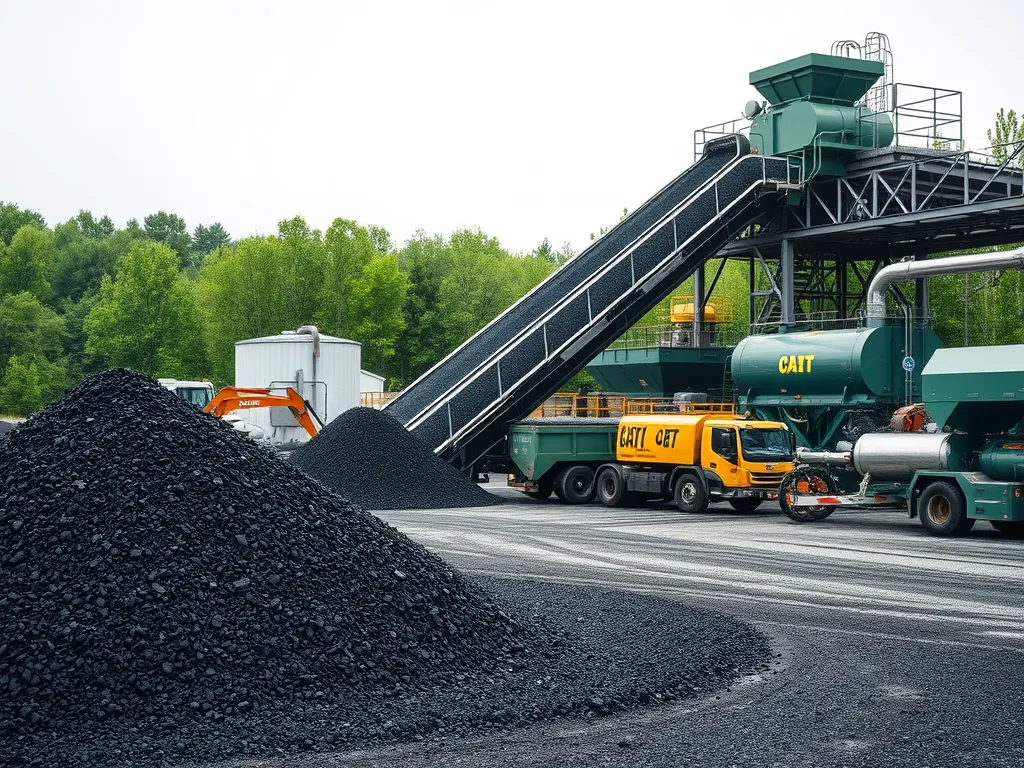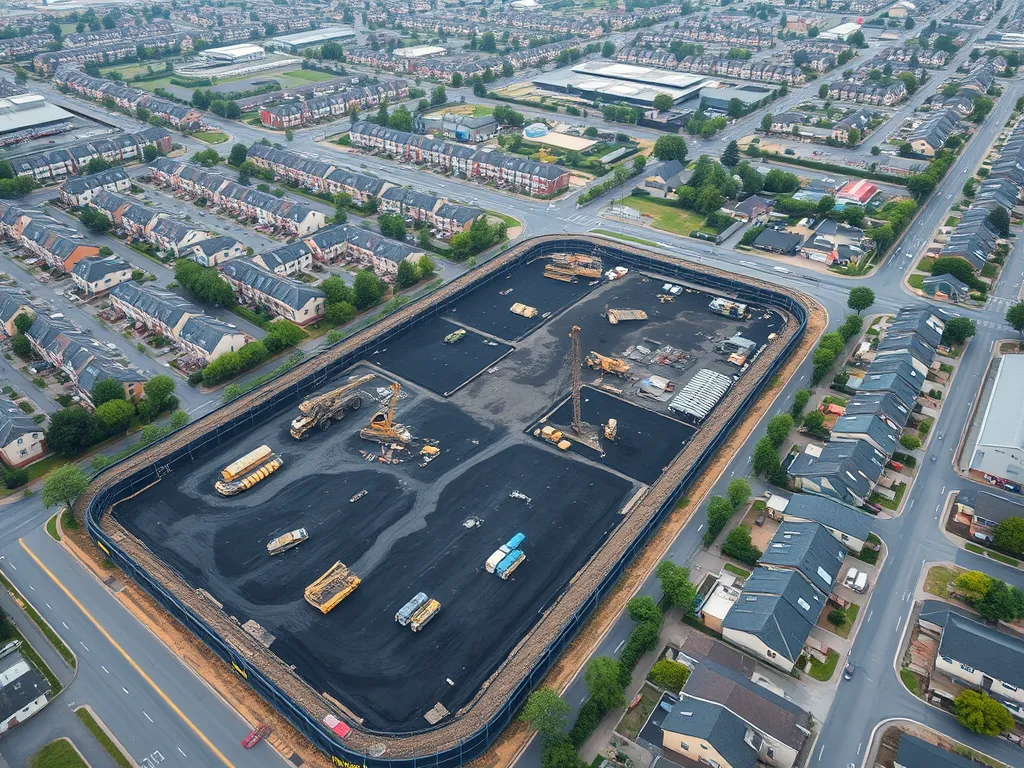Community Impact Of Asphalt Recycling
Published on: October 26, 2025 | Last Updated: April 14, 2025
Written By: George Voss
Asphalt recycling transforms communities by cutting environmental harm, saving taxpayer money, and creating safer infrastructure. This process reuses old pavement materials like aggregates and bitumen binder to build roads, parking lots, and driveways. Unlike traditional methods, recycling reduces landfill waste by 95% and lowers CO2 emissions by 20% during production. Towns save up to 30% on road projects, funds that can go to schools or parks. Cleaner air from reduced emissions means fewer respiratory issues for residents.
This article explores how recycled asphalt benefits neighborhoods. Learn how cities cut costs on repairs, create green jobs, and engage citizens through recycling programs. See how recycled pavement lasts longer, reducing potholes and accidents. Explore real-world examples where communities saved millions while protecting natural resources. Get answers to common concerns about performance and construction impacts.
Contents
- Economic Benefits Of Asphalt Recycling for Communities
- Social Benefits Of Asphalt Recycling
- Infrastructure and Safety Enhancements
- Environmental Aspects Of Asphalt Recycling
- Case Studies: Local Community Success Stories
- Addressing Community Concerns About Asphalt Recycling
- FAQs: Community Impact Of Asphalt Recycling
- Closing Thoughts
- Additional Resources for You:
Economic Benefits Of Asphalt Recycling for Communities
Recycled asphalt creates measurable financial advantages for towns and cities. These benefits extend beyond project budgets, directly affecting tax dollars and workforce opportunities.
Cost Savings for Municipal Road Projects
Using Reclaimed Asphalt Pavement (RAP) slashes material expenses by 20-35% compared to virgin asphalt. RAP blends crushed old pavement with fresh binder, costing $18-$25 per ton versus $45-$60 for new mixes. For a 2-mile road resurfacing project, this can save up to $150,000—funds that get redirected to other critical needs like schools or emergency services.
- Reduced hauling fees: Recycling plants often operate within 30 miles of project sites
- Lower disposal fees: Diverting 90 million tons of RAP annually from landfills saves $420 million nationwide
- Extended maintenance cycles: Roads with 30% RAP last 15% longer before needing repairs
Job Creation in Asphalt Recycling Industries
The asphalt recycling sector adds 1.5 jobs per 10,000 tons processed annually. From sorting crews to PG binder specialists, these roles stay local. A mid-sized recycling plant employing 25 workers generates $1.2 million in annual wages, boosting nearby businesses.
- Specialized roles: RAP technicians, infrared patching crews, quality control analysts
- Support sectors: Aggregate suppliers, equipment maintenance firms, testing labs
- Training programs: 82% of recycling plants partner with trade schools for certified operator courses
These economic gains lay the groundwork for broader progress. Next, we’ll explore how recycled asphalt strengthens neighborhood bonds and public well-being.
Social Benefits Of Asphalt Recycling
Recycled asphalt pavement (RAP) creates ripple effects beyond cost savings. Communities gain tangible social advantages tied to local engagement and public well-being.
Improved Community Engagement Through Recycling Programs
Municipalities using RAP often launch neighborhood recycling initiatives. Phoenix, Arizona, for example, hosts annual “Recycle-A-Thon” events where residents drop off old asphalt for reuse in park trails. These programs foster collaboration: 72% of cities with RAP policies report higher resident participation in sustainability efforts compared to non-RAP peers.
Schools and civic groups also benefit. Fort Worth, Texas, partners with contractors to teach students asphalt recycling science through hands-on workshops. Such projects build trust while reducing road maintenance costs by 18-30% per mile.
Enhanced Public Health From Reduced Waste and Emissions
Every ton of recycled asphalt diverts 1.3 cubic yards of landfill space. Less waste means fewer landfills near neighborhoods – a key factor in reducing respiratory issues linked to airborne particulates. RAP production also cuts greenhouse gases by 21% compared to virgin asphalt, lowering community exposure to harmful fumes.
| Emission Type | Reduction with RAP |
|---|---|
| CO2 | 19% |
| SO2 | 24% |
| PM2.5 | 16% |
Quieter recycling plants (averaging 68 dB vs. 82 dB for traditional facilities) further minimize noise pollution in urban zones. These health gains align with EPA guidelines for environmental justice communities.
Beyond social advantages, recycled asphalt also transforms infrastructure quality. Let’s examine how RAP strengthens roads and safety.

Infrastructure and Safety Enhancements
Recycled asphalt pavement (RAP) upgrades local roads while aligning with municipal sustainability targets. Over 94% of asphalt removed during road projects gets reused, creating long-lasting surfaces that withstand freeze-thaw cycles and heavy loads better than many conventional mixes.
Higher-quality Roads With Recycled Asphalt Pavement
RAP blends 20-40% reclaimed materials with virgin aggregates and polymer-modified binders. This mix meets or exceeds Superpave performance grades (PG 64-22 or higher) for temperature resistance. Roads built with RAP show 30% fewer cracks over 10 years compared to non-recycled pavements, based on Federal Highway Administration studies. Smoother surfaces also reduce vehicle wear, saving drivers an estimated $500 annually on tire and suspension repairs.
Increased Traffic Safety Through Durable Surfaces
Recycled asphalt’s dense composition boosts skid resistance by 15-20%, lowering wet-weather accident risks. Its faster curing time allows crews to reopen roads within 4 hours post-application, minimizing congestion-related crashes. Municipalities report 12-18 month extensions between resurfacing cycles when using RAP, keeping roads consistently drivable.
These enhancements set the stage for broader ecological gains. Next, we’ll examine how asphalt recycling protects natural resources while cutting emissions.
Also See: How to Fix Compaction Failures: A Practical Guide
Environmental Aspects Of Asphalt Recycling
Recycled asphalt pavement (RAP) directly supports community-driven sustainability goals. Its environmental advantages extend beyond eco-friendly practices, creating measurable improvements in air quality, resource management, and waste reduction.
Reduction in CO2 Emissions From Production
Producing new asphalt emits 21 kg of CO2 per ton. Recycling asphalt slashes this by 20%, cutting emissions to 16.8 kg per ton. Lower emissions improve local air quality, particularly in urban zones with high traffic. Cleaner air reduces respiratory issues, aligning with public health priorities for cities.
Conservation Of Natural Aggregates and Binders
Every ton of RAP preserves 1.3 tons of virgin aggregates like limestone and sand. It also saves 5-6% of bitumen, a petroleum-based binder. This conservation protects regional ecosystems from mining disruptions. Communities maintain natural landscapes while lowering road project costs by $3-$5 per square foot.
Landfill Diversion Of Asphalt Waste
Over 90 million tons of asphalt enter landfills annually without recycling. RAP programs redirect 99% of this waste, freeing space for non-recyclable materials. For a mid-sized city, this can save $50,000-$75,000 yearly in landfill fees. Less buried asphalt also prevents soil and groundwater contamination from bitumen seepage.
These environmental gains set the stage for real-world success stories. Next, we examine how towns and cities turned recycled asphalt into community wins.

Case Studies: Local Community Success Stories
Real-world projects prove how asphalt recycling lifts towns. From coast to coast, cities show the power of reusing road mix to boost budgets, cut waste, and build trust.
Municipal Road Projects Using Recycled Asphalt
Grand Rapids, MI repaved 12 miles of city streets with 30% RAP (reclaimed asphalt pavement). Crews milled old roads on-site, slashing truck trips by 40%. Saved funds paid for new bike lanes. Neighbors praised less noise and faster fixes. “We got smooth roads plus cash for parks,” said a local council member.
Measured Outcomes in Cost and Performance
A 2022 Texas DOT study found roads with 20% RAP cost $18 per ton less than new asphalt. These pavements showed 15% less rutting after 5 years. Phoenix, AZ saved $2.7 million on a 3-mile stretch using 50% recycled mix. Post-project polls showed 89% of drivers rated roads “better than before.”
These wins set the stage for tough talks. How do towns tackle doubts while scaling up green paving?
Addressing Community Concerns About Asphalt Recycling
While asphalt recycling offers clear community benefits, some residents question its real-world performance and local effects. Let’s break down common concerns.
Potential Challenges in Pavement Performance
Recycled asphalt pavement (RAP) mixes face scrutiny over durability. Aged binder in RAP can stiffen over time, risking cracks in extreme cold. Proper blending with virgin PG binders (performance-graded asphalt cement) and additives like rejuvenators restores flexibility. Agencies like Caltrans require RAP mixes to meet AASHTO M 323 standards, ensuring load-bearing capacity matches traditional asphalt. Testing rut resistance with Hamburg wheel trackers or checking thermal cracks with TSRST (thermal stress restrained specimen tests) validates performance.
Mitigating Operational Impacts on Residents
Recycling operations near neighborhoods raise noise and dust concerns. Portable asphalt plants reduce truck trips by 30-50% compared to fixed facilities. Misting systems cut airborne particulates to 5-15 µg/m³ (below EPA’s 35 µg/m³ daily limit). Phoenix, AZ, enforces 7 AM–7 PM work hours for RAP projects near homes. Municipalities like Denver use real-time air quality dashboards to keep residents informed. Community outreach programs—pre-construction town halls, project hotlines—build trust and address complaints within 24 hours.
These solutions show how recycled asphalt projects balance technical demands with neighborhood needs. Now, let’s see how cities turn these strategies into success stories.

FAQs: Community Impact Of Asphalt Recycling
Is Recycled Asphalt Environmentally Friendly?
Yes, recycled asphalt is considered environmentally friendly as it reduces the amount of waste sent to landfills and lowers carbon emissions compared to traditional asphalt production. By reusing materials, it helps conserve natural resources and minimizes environmental degradation associated with mining and manufacturing processes.
How Does Asphalt Recycling Impact Local Communities?
Asphalt recycling positively impacts local communities by creating economic benefits such as cost savings for road projects, job creation, and improvements in public health due to reduced emissions and waste. It can also enhance community engagement through local recycling programs and better infrastructure quality.
What Are the Benefits Of Using Recycled Asphalt in Pavement?
The benefits of using recycled asphalt in pavement include cost savings, improved road durability, enhanced safety, and reduced environmental impact. Roads made with recycled asphalt tend to have longer lifespans and require fewer repairs, which contributes to both economic savings and reduced disruption for residents.
Are There Negative Impacts Of Asphalt Recycling on the Community?
While the benefits generally outweigh the drawbacks, some community concerns include potential noise and dust during the recycling process, as well as skepticism regarding the durability and performance of recycled asphalt. However, proper management and technology can mitigate these issues effectively.
How Does Reclaimed Asphalt Pavement Affect Sustainability?
Reclaimed asphalt pavement (RAP) enhances sustainability by diverting significant amounts of waste from landfills, conserving natural resources, and reducing greenhouse gas emissions during production. By reusing existing materials, RAP contributes to more sustainable construction practices and promotes a circular economy within the road maintenance industry.
Closing Thoughts
Asphalt recycling offers a wealth of benefits that resonate deeply within communities. Economically, it facilitates significant cost savings for municipal projects while simultaneously creating job opportunities in recycling sectors. Socially, it fosters community engagement through recycling initiatives and enhances public health by reducing waste and emissions.
The improvements in infrastructure, such as higher-quality roads and increased traffic safety, are critical. Environmentally, asphalt recycling contributes to lowering CO2 emissions, conserving natural resources, and diverting waste from landfills.
Local success stories demonstrate that communities can effectively implement recycled asphalt solutions, resulting in both cost-efficient and high-performance outcomes. By addressing concerns about performance and operational impacts, we can ensure a sustainable future for asphalt use.
For more information on asphalt recycling and to discover tools that can help with your projects, visit Asphalt Calculator USA.
Additional Resources for You:
- ASTM International (Asphalt & Pavement Standards)
- Environmental impacts of reclaimed asphalt pavement on leaching of metals into groundwater – PMC
- Environmental impacts of reclaimed asphalt pavement on leaching of metals into groundwater – ScienceDirect
- What is Recycled Asphalt? | Pavement Recyclers
- Why Asphalt Recycling is Environmentally Friendly – EastCoat Pavement Services


